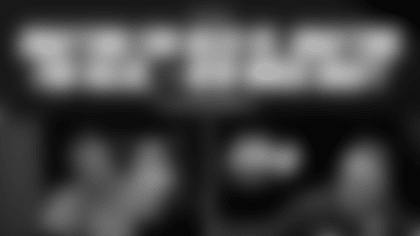The Steelers' time at Saint Vincent College has passed, and three of the recurring themes of their summer there were injuries, the Mike Wallace holdout, and the number of skirmishes/fights that broke out during the practices in pads.
Injuries always are a part of the training camp/preseason process for every NFL team, and often teams' fortunes are determined in part by which ones are able to stay the healthiest over the course of a 17-week regular season. As a result, the injury report is among the most important pieces of information disseminated on a daily basis.
While Wallace's holdout was the first for the Steelers since the 2005 version with Hines Ward, the team handled both of those the way it had dealt with holdouts dating all the way back to the 1970s.
The chippiness at practice began on the first day the team was in pads, with Antonio Brown vs. Keenan Lewis in 7-on-7 getting things started and Willie Colon planting Lawrence Timmons in 11-on-11 being that afternoon's main event. In the weeks that followed, there were several more fights, with Antonio Brown vs. Ike Taylor being the most dangerously stupid because it involved one guy wearing a helmet throwing punches at another guy wearing a helmet, and both of those guys involved need their hands to make their living. That there were no broken bones resulting from the exchange was pure luck.
At Saint Vincent College, Coach Mike Tomlin was asked daily for a report on the status of the injured, and he was asked periodically for an update on the Wallace situation and for his opinion of the in-practice scuffling.
There were times when Tomlin's answers seemed vague, or curt, or dismissive. In this exclusive interview with Steelers.com, he explains his reasoning for treating each of these issues the way he did.
Q. When you talk about injuries with your team, it's "one man's misfortune is another man's opportunity." When you choose to talk about injuries to the media, you're somewhat aggressive in that guys are always characterized as day-to-day, or week-to-week. Is that a psychological thing?
A. Yes.
Q. Why do you believe that's the way to handle it?
A. Because everybody needs to feel the urgency of now in this business and in this game. It is just that. When you're working, particularly in a training camp type setting, you work with a lot of young people and there are a lot of guys who don't understand that. The veteran players – the James Harrisons of the world – understand that. So you have to use as many tools as you can to teach them that, and just overall attitude in terms of how people come back from unfortunate circumstances is a big tool in teaching that.
Q. There have been a number of reports that Mike Wallace will report once the team has returned to Pittsburgh. How much stock do you put in that?
A. I put no stock in it. I'll see him when I see him. I said that the first day of training camp, and I mean it.
Q. Do you have a doghouse?
A. I don't. I like to think that I don't, because I deal with issues very directly when they arise, and I think when you do that you don't tote baggage. I say what I think needs to be said, or take what action I think needs to be taken immediately. When you do that I think you don't harbor ill will or feelings.
Q. Is that tough to do sometimes, to not hold a grudge?
A. When you deal with stuff in an up-front manner, it's just easier to move on. I usually say what's on my mind in regards to some of those things that could annoy you in terms of a baggage standpoint.
Q. In a situation then where a player is a holdout for an extended period of time – and as you said about Mike Wallace, you'll see him when you see him – is that going to be a happy occasion?
A. It depends on what frame of mind and level of conditioning and readiness that he shows up in, to be quite honest with you. I'm not going to anticipate anything, and that's what I mean when I say I'll see him when I see him. He's going to dictate how we move forward. His overall readiness, his level of conditioning, his knowledge of what we're doing, how quickly he can come up to speed when he gets here – all of those things factor into how we move forward. So that's why I say I'm not going to anticipate anything or try to use a crystal ball. I'll just wait until it transpires and react accordingly.
Q. On the practice fields at Saint Vincent College, Ike Taylor and Antonio Brown were involved in some skirmishes. Did that bother you?
A. It's not something that I embrace. Fighting is not part of football, but I acknowledge that it is part of football development at times. These men are up here competing for jobs, fighting for jobs, and sometimes emotions run high. My thing is that as a parent I don't like to talk a great deal about it, because I want all the young people to understand that fighting is not a part of the game of football. That's why I get resistant in offering a color commentary, if you will, about some of those things that transpire. I acknowledge that it happens during team development at times, but it's not something I want to encourage, particularly from a young person's standpoint.






